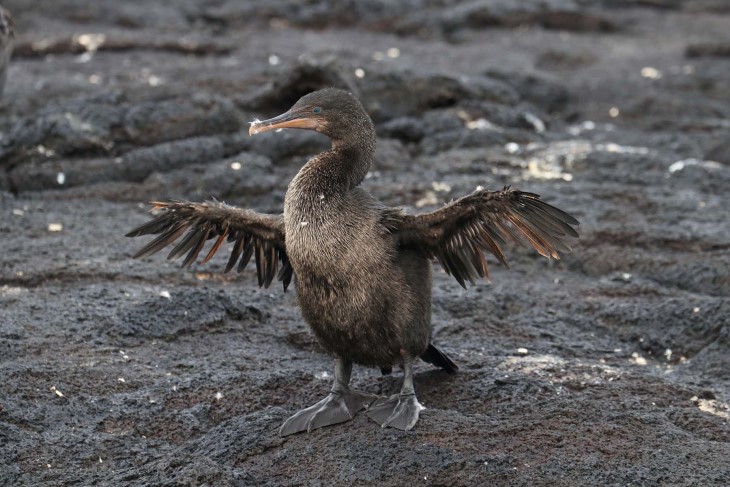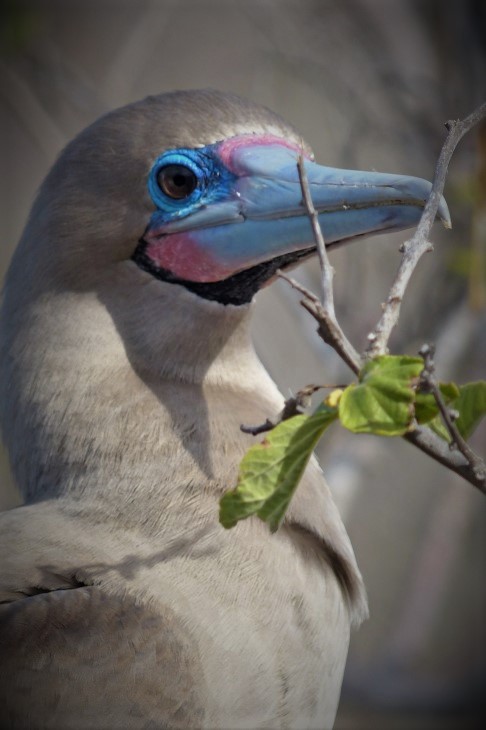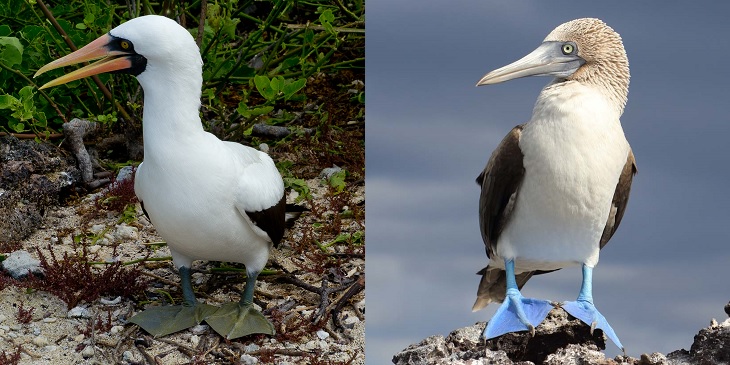
SIGN UP TO RECEIVE
15% OFF
IN YOUR NEXT TOUR

Suliformes Birds of the Galápagos: Masters of the Air and Sea
SCROLL DOWN TO READ

Suliformes Birds of the Galápagos: Masters of the Air and Sea
SCROLL DOWN TO READ
Suliformes Birds of the Galápagos: Masters of the Air and Sea
The order Suliformes comprises five families (one of which is extinct), three of which can be found in the breathtaking Galápagos Islands. Collectively known as sulids, Suliformes is a relatively new classification in the avian world, emerging from a re-evaluation of earlier taxonomic structures.
Previously, the families within Suliformes were grouped under Pelecaniformes, a broader order that included birds characterized by webbed feet and four toes. However, extensive studies and genetic comparisons revealed that not all families within the old classification were closely related to pelicans. As a result, these distinct families were separated into their own order, Suliformes, to better reflect their unique evolutionary pathways.
Suliformes exhibit several fascinating traits:
The order Suliformes conventionally includes the following families:
Understanding the Suliformes and their unique adaptations not only enriches our knowledge of avian evolution but also highlights the importance of conserving their habitats, especially in the delicate ecosystem of the Galápagos Islands. Whether you’re a birdwatching enthusiast or simply exploring the natural wonders of the archipelago, the Suliformes offer a captivating glimpse into the extraordinary diversity of life found in this remarkable destination.

The order Suliformes includes many of the seabirds found in the Galápagos. Boobies, cormorants, and frigatebirds are all members of this group, which comprises six species commonly observed nesting in the archipelago, although not all of them are endemic to the islands. In the Galápagos, these include two species of frigatebirds, three species of boobies, and the flightless cormorant. There are no gannets, anhingas, or darters in the Galápagos.
In the Galápagos Islands, all Suliformes are relatively large birds. They range in length from about 70 cm (28 in) with a wingspan of up to 1 m (3 ft 3 in) in the red-footed booby, to 89–114 cm (35–45 in) in length with a wingspan of 2.17–2.44 m (7.1–8.0 ft) in the magnificent frigatebird.
In terms of their way of life, Suliformes birds fall into three adaptive groups:

Like many marine birds, Suliformes have a salt gland located inside their heads, situated between their eye sockets, which allows them to drink salt water. Their forward-facing eyes provide binocular vision, making them efficient predators capable of accurately judging distances. This feature gives them a distinctly goofy appearance when viewed head-on. Additionally, these birds possess an oil gland that helps them resist water while diving or swimming. However, this gland is absent in cormorants and found only in small amounts in frigatebirds, the latter being the only members of the Suliformes order that do not swim.
All Suliformes have a structure called the furcula (or wishbone). The furcula is a springy, V-shaped bone that aids in raising the wing during the upstroke. During the downstroke, the furcula is stretched, and when the wing relaxes, the furcula snaps back into place, assisting in lifting the wing. The arms of the furcula are attached to the shoulder, while the fused tip of the V is suspended above the breastbone. Suliformes, except for the flightless cormorant, primarily glide and do not flap their wings frequently. In these birds, the tip of the furcula is solidly fused to the breastbone, and the arms are sturdier, providing better support for their wings.
The gular sac is most highly developed in frigatebirds, but it is also quite prominent in boobies and cormorants. In frigatebirds, this sac is used as part of their mating display. When observing boobies and cormorants, it’s not unusual to see their gular sacs somewhat extended and fluttering back and forth—a behavior known as gular fluttering. This action is similar to panting in mammals; these birds, often sitting on nests in the hot sun, use gular fluttering to shed excess heat.

In Suliformes, courtship is an intriguing dance of selection and display. During this process, it is the female who ultimately chooses her mate. Typically, the male selects a nest site from which he displays to passing females.
The male's advertising displays include “sky-pointing” in boobies and “wing-waving” in cormorants. In these displays, both the head and tail are raised, and the wings are partially lifted. Notably, each species of booby has its own unique positions for the wings and tail, adding to the visual spectacle.
Once a female has joined a male at the nest site, he may venture off to gather nest materials. The female, either alone or with the male’s assistance, adds these materials to the nest structure. Copulation typically occurs on the nest site without any elaborate pre-copulatory or post-copulatory displays.
Once a pair bond is established, it is reinforced through various activities such as joint nest building, mutual defense of their territory, and preening—where one bird grooms the feathers of the other. These behaviors strengthen their connection and contribute to the nurturing environment necessary for raising their young.
The Suliformes of the Galápagos Islands are a remarkable testament to the adaptability and diversity of seabirds. From the agile frigatebirds and striking boobies to the unique flightless cormorants, these avian species enrich the natural beauty of the archipelago. Whether you're observing them in their habitats or capturing their grace through photography, the Suliformes are sure to be a highlight of your Galápagos adventure.
